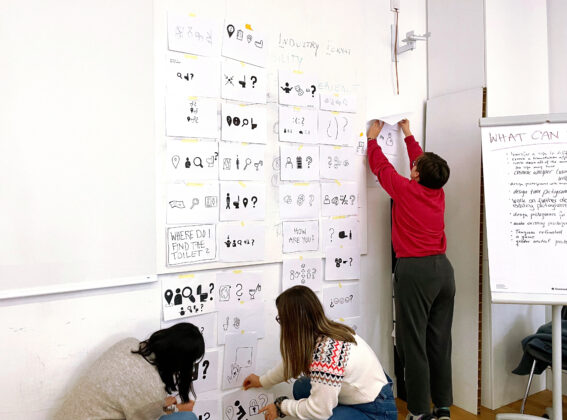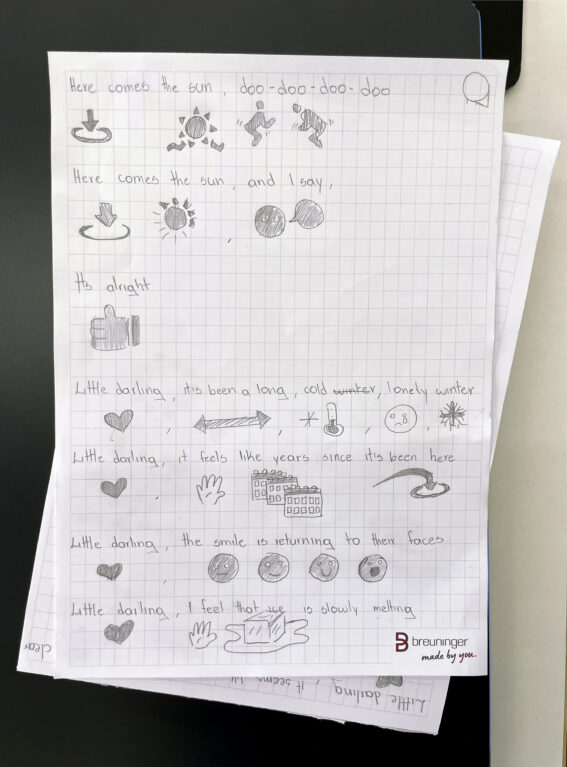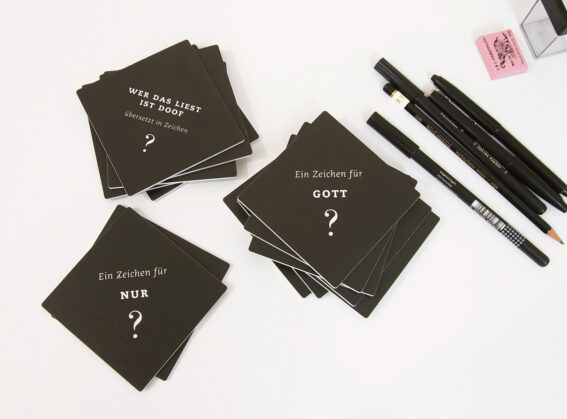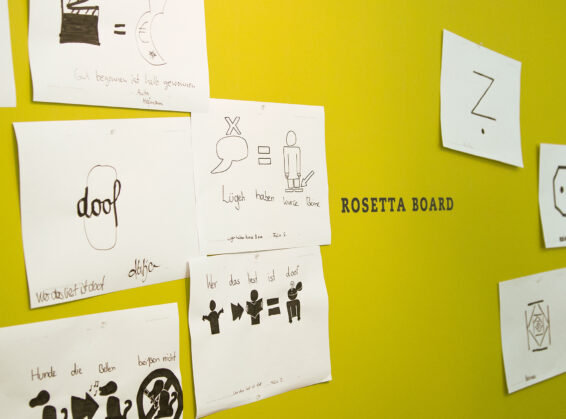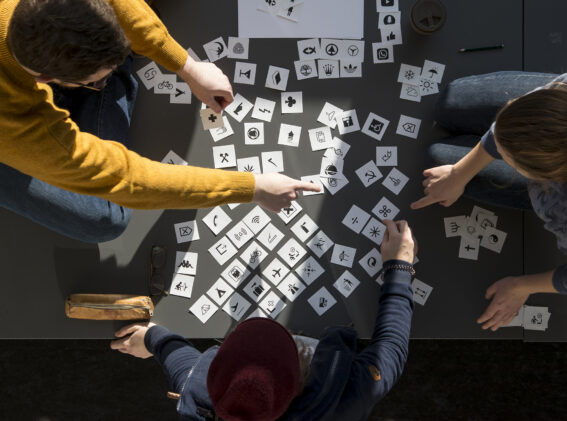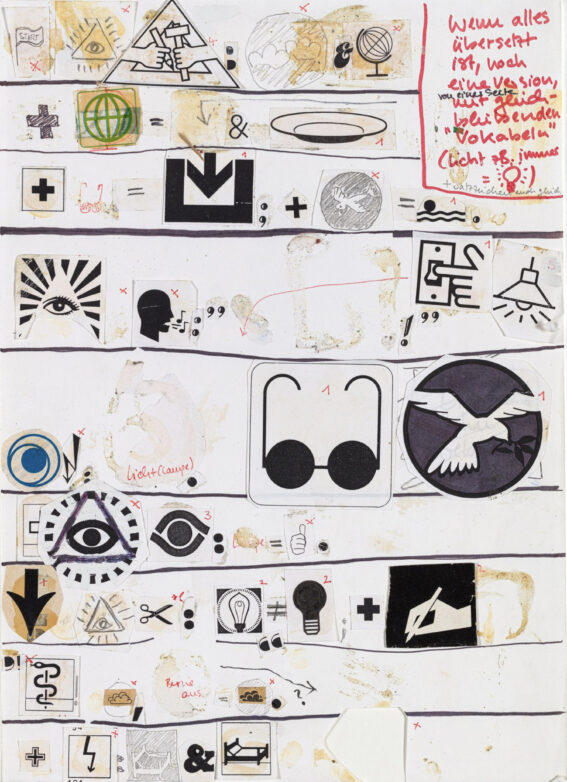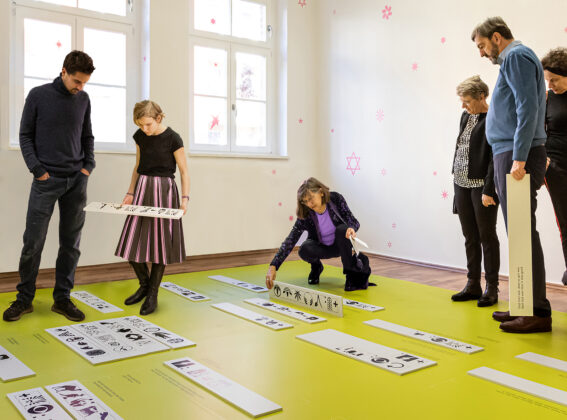Communicate with each other without speaking the same language? A dream! Could it come true? Purely visually, perhaps? Independent from spoken languages?
Why not use our contemporary hieroglyphics: pictograms, logos, emojis, icons and symbols? By lining them up, such »short messages« could be used to communicate complete stand-alone messages. With this idea I came up as a student and »translated« the biblical creation story. Today I know that other people besides me had this idea. Independent of each other. In different countries.
In early human history, every communication system in the world was symbol-based. Of these, the Egyptian hieroglyphs may be best known. Who would have thought that, surprisingly, uncounted generations later, since the beginning of the 20th century, new approaches would emerge? And that this would happen increasingly. Obviously, this idea wants to learn to walk, and to see the world!
However, (pictographic) universal languages developed by individuals so far did not have the desired success. Presumably, the incentive to learn and use them was too small.
And yet.
An internationally understandable, visual language is perhaps more urgently needed today than ever before. Since everything around us is in motion, we are quite speechless while trenches between people, cultures, and nations are growing.
And the time is overripe, as the circumstances are more favourable than ever before. Computers and the internet not only brought a flood of icons. They also allow us to communicate in an increasingly globalised world in an unprecedentedly simple manner.
So, maybe there is way.
Why not try to boost the evolution of a pictographic language with collaborative intelligence? After all, all living languages are the work of many. The more a language is used and enriched, the more understandable it becomes.
Hence my idea to invite people from the most diverse sociotopes, generations, professions, languages, and cultures as thinkers, designers and testers. Anyone who can hold a pencil could join in. Each participant would be considered an authority – for their own horizon of experience and communication style. Out of the abundance, the most appropriate and practicable »visual vocabulary« and »pictogrammar« may gradually crystallise. I imagine this as an organic process with an open outcome.
With my »Icon spell« project I aim to bring together the popular of our days with our visual intangible heritage. As each culture has its own icons, comparing and discussing them has what it takes to raise awareness. It might help to bridge divides.
The goal of this experiment would be achieved as soon as it develops a momentum of its own, when it becomes a self-learning system.
But can this really work?
Experiments would not be experiments if their outcome were predictable. So, why not try it and see what happens? As communication via icons has a long history it may have a lot to look forward to in the future.
Perhaps even more than in their application, the relevance of my »Icon spell« project lies in the exchange that goes along with it, which could enhance mutual understanding and thus ultimately strengthen democracy and create peace.
A start has been made.
I already had students translate terms and texts into signs in several workshops, most recently at the University of Art and Design in Schwäbisch Gmünd in an international master’s programme with students from Mexico, Ukraine and Korea. In my exhibitions at the Museum für Gestaltung Zürich and the Museum für Druckkunst Leipzig, I invited visitors to comprehend my pictogram translation of »Genesis« in the form of a giant puzzle on 30 square metres and to design their own pictograms for abstract terms such as »tomorrow« or »only«. The results were presented on a pinboard with the title »Rosetta Board«.
Now in the summer semester I will be working with students on visual vocabulary and a pictogrammar for the first time at ecosign academy in Cologne. Nine of them joined me and my fellow Symbol Group member Karel van der Waarde (Brussels) for the very first Icon spell workshop at the New European Bauhaus Festival at the Musée Art et Histoire in Brussels in April. People of all ages from 26 countries and a wide range of professions worked on visual translations of selected terms and sentences. Lively conversations kept popping up. Everyone involved obviously enjoyed it. A brilliant start to the project!
In a water castle near Meißen, I will be a guest with this workshop at the interdisciplinary Pfingsttagung in May. This year’s theme is »What if«.
With Luisella Ströbele and her label icke, Berlin I already co-operated before. This time, as part of 48 Stunden Neukölln on 29 June, visitors are invited to translate terms and sentences on this year’s theme of »Silence« into (sequences of) pictograms. It goes without saying that this matches marvellously with the idea of Icon spell. The visual messages can be transferred onto T‑shirts there and then and can be photographed.
In September I will talk about my vision at The Symbol Group’s next conference. This two-day conference will be about »Icons for Society: Past, Present and Future – An Exploration of 40 years of Symbol Culture« and it will be funded by The British Academy. In November, I will be giving this lecture in German at the Typographische Gesellschaft München.
I could win the Deutsches Museum in Munich for a first Icon spell exhibition+experiment in 2026. In addition, several Goethe Institutes in the USA, Mexico and Canada have already expressed their interest in participating in the Icon spell project, first and foremost the one in San Francisco. However, their financial resources have been drastically reduced since corona and the war in Ukraine. That is why we are currently busy submitting requests for funding.
Should you have ideas, suggestions, advice or support for my project and me, if you would like to participate, I look forward to receiving your mail!




